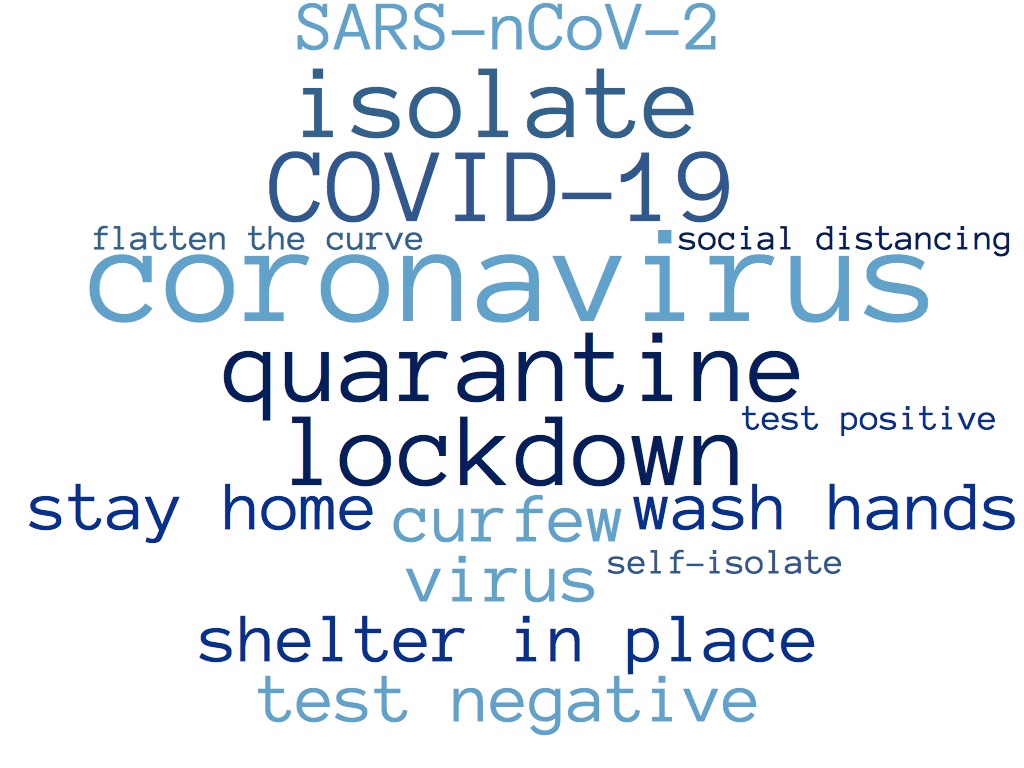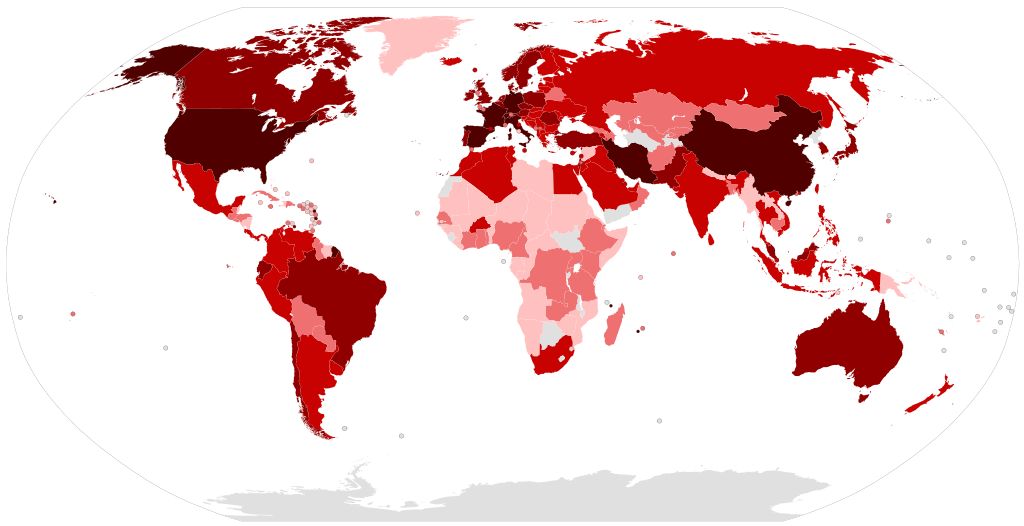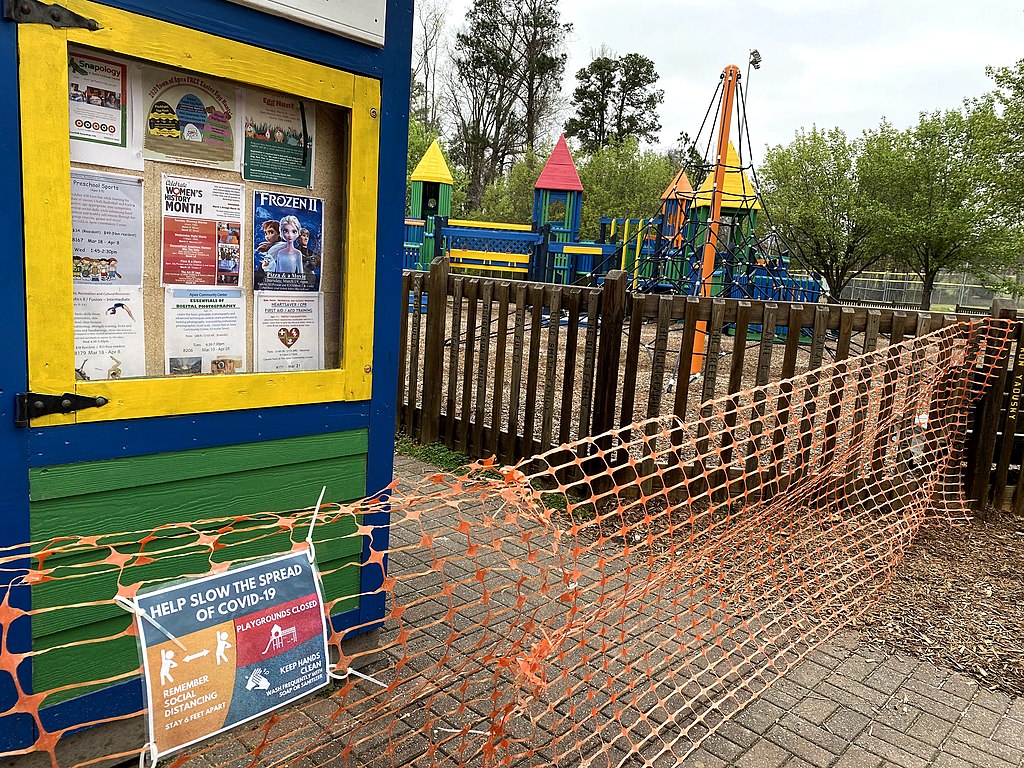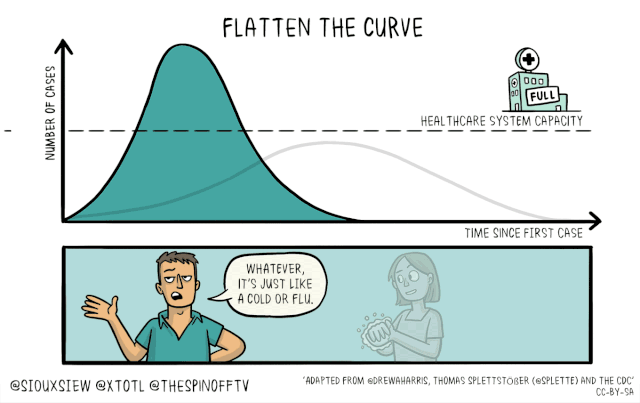The rapid spread of the new coronavirus around the world has brought a lot of special words and phrases into everyday life. Below are some explanations for some of the most commonly used new words and phrases.

(Source: NewsForKids.net [CC BY-SA 4.0], Created on: Wordclouds.com.)
Virus Viruses are tiny germs that can cause diseases.
Coronavirus Coronaviruses are viruses that have a spiky ring around them, which looks like a crown when viewed with a powerful microscope. There are many coronaviruses which affect animals, but before COVID-19, only six coronaviruses were known to affect humans. Four of these cause common colds. The other two cause more serious lung illnesses, and can be deadly. Though there are several coronaviruses, usually when people say “the coronavirus”, they mean SARS-CoV-2, the one that is causing the trouble now.
SARS-CoV-2 SARS-CoV-2 is the name given to the new coronavirus which started in December, 2019 in Wuhan, China. The name of the virus is different than the name of the disease it causes (COVID-19). Currently, many people are calling SARS-CoV-2 “the coronavirus” since it is the one causing all the trouble right now.

(Source: NIAID [CC BY-SA], via Wikimedia Commons.)
COVID-19 COVID-19 is the name given to the new coronavirus disease. “COVI” stands for “coronavirus”, “D” is for “disease”, and the “19” represents the year the virus appeared.
Epidemic An epidemic is a situation where a disease quickly and seriously affects large numbers of people in a certain area.
Pandemic A pandemic is a situation where a serious disease spreads rapidly and widely enough to affect the whole world.

(Source: Pharexia [CC BY-SA], via Wikimedia Commons.)
Lockdown Many cities, states, and whole countries have been placed on lockdown because of the coronavirus. Though lockdowns have different rules in different places, they all aim to keep people at home and limit movement as much as possible. Most lockdowns also have rules closing all businesses that are not absolutely necessary.
Shelter in place Shelter in place is another way of saying lockdown. It means stay at home and don’t go out.
Curfew This is a special kind of limit on movement. It sets up certain hours, usually at night, when people are not allowed to go out.

(Source: Ke4roh [CC BY-SA], via Wikimedia Commons.)
Isolation To isolate means to cut off or separate something from other things. Something in isolation is by itself. A person who has COVID-19 is usually isolated from others to keep from spreading the disease.
Self-isolation Self-isolation is when someone isolates himself or herself – keeping away from other people. This may be needed if hospitals don’t have enough places for sick people. Someone may self-isolate if they believe they have the disease but haven’t been able to get a test.
Quarantine To quarantine something or someone means to keep it or them in a separate place, usually to make sure a disease doesn’t spread. It may not be known whether the people being quarantined have a disease or not.
Social distancing Social distancing means keeping a safe distance away from other people to prevent spreading a disease. Social distancing rules include:
• avoid group meetings
• stay 6 feet (2 meters) away from others
• cough into your bent elbow, not your hands
• wash your hands well, and do it often
• avoid touching your face
Test positive If someone “tests positive” for COVID-19, a medical test has shown that the person is carrying the coronavirus.
Test negative If someone “tests negative” for COVID-19, a medical test has shown that the person isn’t carrying the coronavirus.
Flattening the curve Slowing down the spread of the disease is sometimes called “flattening the curve”. If everyone gets sick at the same time, the graph of the number of cases shows a sharply rising curve that looks like a steep mountain. If the spread of the disease is slowed, there are fewer cases over time, so the curve looks like a small hill. That way, everyone stays safer. Social distancing, lockdowns, and other limits on movement are all efforts to flatten the curve.

(Source: Siouxsie Wiles and Toby Morris [CC BY-SA], via Wikimedia Commons.)
Below is a link to Word Search puzzle to download and print out. It contains most of the words in the list above.
